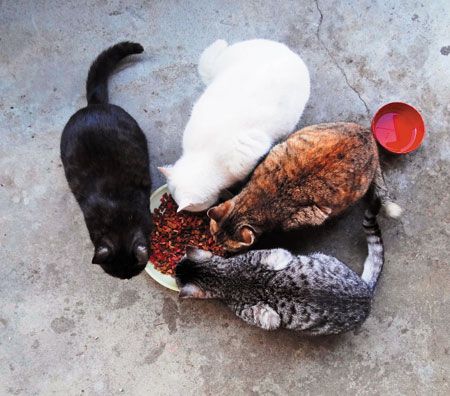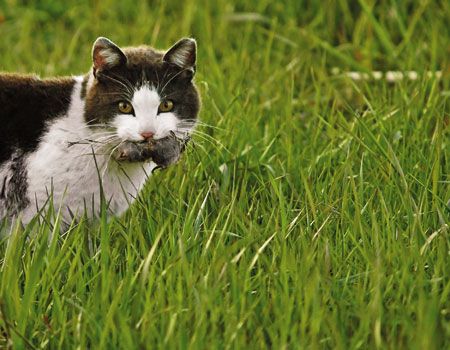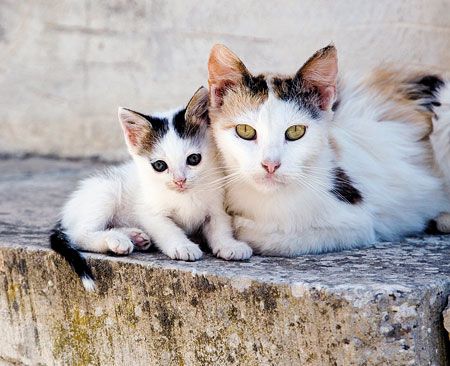Four tips to protect catsfrom cats
Help clients understand feral and outdoor cats can be a danger to their pet cats.

Getty ImagesThere are an estimated 600 million cats in the world, and that number is growing. Many of these cats are feral or outdoor cats that seek refuge wherever they can-and unwittingly spread parasites and other diseases to your clients' pets. Help clients protect their pets-and find a safer haven for feral cats-with these four tips when feral cat colonies get a little “too close to home.”
Tip 1: Refrain from feeding the feral cats or giving them shelter without the guidance of veterinary professionals or reputable animal rescue organizations
For animal lovers, it can be tempting to want to help each homeless cat that seems hungry or cold. But when clients feed or shelter feral cats they don't plan to permanently care for, they're encouraging them to come closer to their home and to stay there. Because feral cats tend to form “colonies,” one cat can quickly become several cats. As more cats inhabit the area, the number of pregnancies and diseases within the colonies increases. And leaving food outdoors can attract more wildlife than just a few cats. Raccoons and skunks are often known for helping themselves to food left at the doorstep for outdoor cats. This is a danger not only to clients' pets, but to themselves as well.

Getty ImagesTip 2: Keep your cat indoors or monitor their time outside
Many pet cats enjoy time outside, some more than others. It can be great exercise and stimulation for them, but it's not always the best choice. If there are feral cats in the area, there's a greater chance a pet cat will get into fights with other cats. Cat bites can lead to bite wound abscesses, as well as the transmission of the feline immunodeficiency virus (FIV) and rabies virus. Feral cats are also a common source of intestinal parasites, such as roundworms and hookworms, which can affect pet cats. Indoor/outdoor cats can also become infested with fleas from contact with a feral cat-or even places feral cats have been. This can be a great nuisance to pet owners and their homes. If clients still want to allow their cats to go outdoors, advise them to accompany their pets using either a leash or in a fenced-in yard where they can easily monitor cats and bring them back inside.

Getty ImagesTip 3: Ensure your cat's vaccinations and preventives are up-to-date
Whether cats are kept indoors or allowed to spend some of their time outside, it's important to keep their vaccinations up-to-date. This helps protect them from life-threatening diseases they could come in contact with when feral cats are in the area. There are vaccines available for rabies, FIV and feline leukemia virus (FeLV). Monthly preventive products can protect pets from heartworm disease, fleas and intestinal parasites.

Tip 4: Use resources to ensure a better future for feral cats
After giving the first few pieces of advice, a client may still want to help the feral cats in some way. Local shelters will often provide a trap or help trap nearby feral cats to have them treated by a veterinarian, spayed or neutered and vaccinated. For sociable cats, adoption in an appropriate home is an option. Some people also manage feral cat colonies to establish a safe living place. Client can arrange to have cats transported to these colonies, where they can have more appropriate care without endangering clients or their pets.
Ciera Miller is a CVT at Metzger Animal Hospital in State College, Pennsylvania.